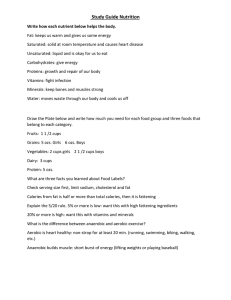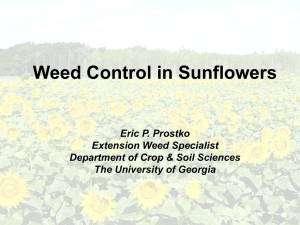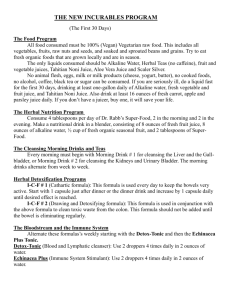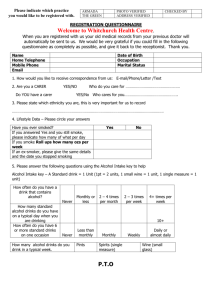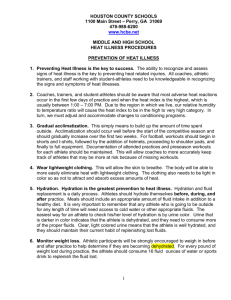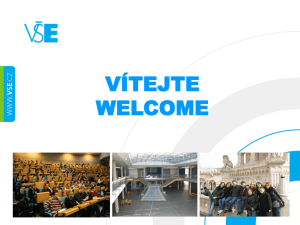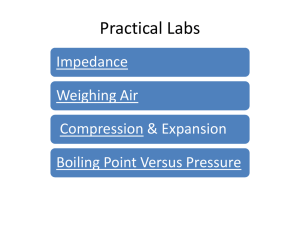SECONDARY EDUCATION CERTIFICATE ECONOMICS: SPECIMEN PAPER Syllabus: 2009 –
advertisement
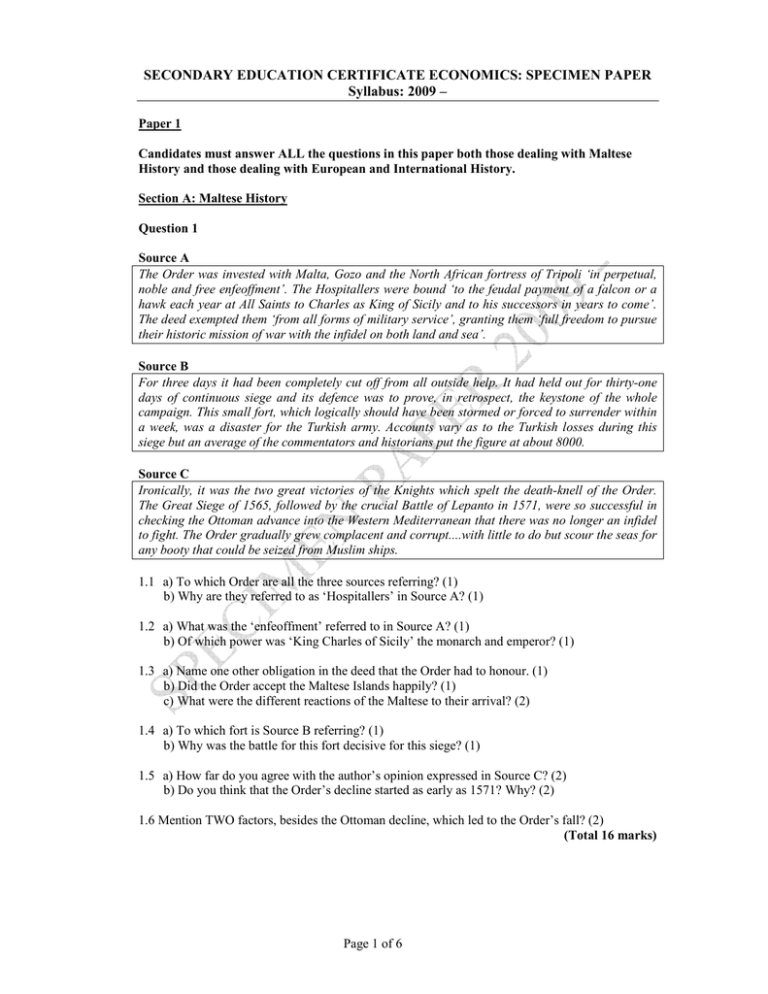
SECONDARY EDUCATION CERTIFICATE ECONOMICS: SPECIMEN PAPER Syllabus: 2009 – Paper 1 Candidates must answer ALL the questions in this paper both those dealing with Maltese History and those dealing with European and International History. Section A: Maltese History Question 1 Source A The Order was invested with Malta, Gozo and the North African fortress of Tripoli ‘in perpetual, noble and free enfeoffment’. The Hospitallers were bound ‘to the feudal payment of a falcon or a hawk each year at All Saints to Charles as King of Sicily and to his successors in years to come’. The deed exempted them ‘from all forms of military service’, granting them ‘full freedom to pursue their historic mission of war with the infidel on both land and sea’. Source B For three days it had been completely cut off from all outside help. It had held out for thirty-one days of continuous siege and its defence was to prove, in retrospect, the keystone of the whole campaign. This small fort, which logically should have been stormed or forced to surrender within a week, was a disaster for the Turkish army. Accounts vary as to the Turkish losses during this siege but an average of the commentators and historians put the figure at about 8000. Source C Ironically, it was the two great victories of the Knights which spelt the death-knell of the Order. The Great Siege of 1565, followed by the crucial Battle of Lepanto in 1571, were so successful in checking the Ottoman advance into the Western Mediterranean that there was no longer an infidel to fight. The Order gradually grew complacent and corrupt....with little to do but scour the seas for any booty that could be seized from Muslim ships. 1.1 a) To which Order are all the three sources referring? (1) b) Why are they referred to as ‘Hospitallers’ in Source A? (1) 1.2 a) What was the ‘enfeoffment’ referred to in Source A? (1) b) Of which power was ‘King Charles of Sicily’ the monarch and emperor? (1) 1.3 a) Name one other obligation in the deed that the Order had to honour. (1) b) Did the Order accept the Maltese Islands happily? (1) c) What were the different reactions of the Maltese to their arrival? (2) 1.4 a) To which fort is Source B referring? (1) b) Why was the battle for this fort decisive for this siege? (1) 1.5 a) How far do you agree with the author’s opinion expressed in Source C? (2) b) Do you think that the Order’s decline started as early as 1571? Why? (2) 1.6 Mention TWO factors, besides the Ottoman decline, which led to the Order’s fall? (2) (Total 16 marks) Page 1 of 6 Question 2 Source A “…an impregnable post, which could be defended against all the world at a small expense either of blood or treasure; which could not only completely control the whole of the Mediterranean, Levant and Adriatic, but secure us against any views which the French republic might have upon Egypt, the possession of which would enable them more easily to dispossess us of our eastern dominions than any measure in the power of man to devise.” (Letter of Mark Wood to Henry Dundas dated 15th April 1798) Source B 20th of November 1798 2.1 a) Do you think that the author of source A was in favour of Britain taking over Malta? (1) b) What was his main argument? (2) 2.2 In source A the author mentions ‘our eastern dominions’. To which country is he referring? (2) 2.3 Which two very significant events related to Malta occurred during the seven months that passed from the writing of the letter in source A and the publication of the caricature (source B)? (4) 2.4 Which two countries are the figures in source B representing? (2) 2.5 Why is one of the feet of Jack Tar resting on Malta? (2) 2.6 Why is the figure on the right in the caricature being represented as falling off the globe? (2) 2.7 What sort of bias or propaganda can you detect in source B? (2) (Total 17 marks) Page 2 of 6 Question 3 Source A Civilian Ration Entitlement – 1942 Ration per half month for a family of five (man, wife and three children) Jan/Jun Jul/Dec Bread ozs 52.5 (daily) 55 (daily) Paste ozs 38 Flour ozs Rice ozs 13 7 Preserved Meat ozs 24 24 Preserved Fish ozs 8 22 Frozen Meat ozs Cheese ozs 8.5 Powdered Egg ozs Fats ozs 28 21 Oil ozs 37 33 Sugar ozs 108 55.5 Tea ozs 3.5 Coffee ozs 13 10.5 Powdered Milk ozs 39.5 Milk (tinned) Semolina ozs 3.5 Fruit (fresh) ozs Salt ozs Jam ozs Sweets ozs Soap ozs 42 21 Matches boxes 3 2 Kerosene gallons 1.5 1.12 (Report on the Working of the Rationing Office for the years 1941-4, the Malta Government Gazette Suppliment No. V of 17th January, 1947) Source B Daily Army Rations – Spring/Autumn 1942 Bread Biscuits Flour Tinned meat M&V Steak & Kidney (tinned) Bacon (tinned) Cheese (tinned) Milk (tinned) Sugar Tea Salt Sardines Salmon Herrings Potatoes (tinned) Vegetables (tinned) Vegetables (fresh) Peas (processed) Peas (dried) Jam Fruit (fresh) Margarine Cigarettes Tobacco Matches 11 1 1 4 1 1 1 1.5 0.5 0.25 1 2 2 1 0.5 1 1 40 2 1 ozs ozs ozs ozs ozs ozs ozs ozs ozs ozs ozs ozs ozs ozs ozs ozs ozs ozs ozs ozs ozs ozs ozs per week ozs per week box per week (adapted from the Official History of the Second World War, Army Medical Services, Campaigns in General History, pp. 623-4) Page 3 of 6 3.1 a) What does the word ration mean? (2) b) Why do you think that rationing had to be introduced in Malta at that time? (1) c) Source A and Source B are rations for different people. For whom did Source A refer and for whom did Source B refer? How can you infer this? (3) 3.2 a) Source A refers to powdered milk and eggs. Why do you think that these were powered? (1) b) Cigarettes and tobacco are found in Source B but not in Source A. Why do you think this is so? (2) c) Name two other items which were given to the persons referred to in Source B but not to the persons referred to in Source A? (2) 3.3 Write a short paragraph to explain what you can tell about the social and economic situation of the Maltese Islands at that time. (6) (Total 17 marks) European and International History Question 4 Source A The revenues of all Christdom are being sucked into this insatiable basilica. The Germans laugh at calling this the common treasure of Christdom. Before long all the churches, palaces, walls and bridges of Rome will be built out of our money ....Better that it should never be built than that our parochial churches should be despoiled. (Luther’s Ninety-Five Theses) Source B I am descended from a long line of Catholic Emperors of this noble German nation, of the Catholic Kings of Spain, the archdukes of Austria and the dukes of Burgundy. They were all faithful to the death to the Church of Rome and they defended the Catholic faith and the honour of God. I have resolved to follow in their steps. A single friar who goes counter to Christianity for a thousand years must be wrong. (from the Diet of Worms, 1520) 4.1 Who was the Luther referred to in Source A? (1) 4.2 What were the Ninety-Five Theses? (2) 4.3 a) To which ‘basilica’ is he referring in Source A? (1) b) Why is Luther criticising its building? (1) 4.4 a) What were many priests of the Catholic Church actually selling at that time to collect money? (1) b) How did they convince the people to give them this money? (1) 4.5 a) Who is the Emperor addressing the Diet mentioned in Source B? (1) b) How is his statement connected to Source A? (1) 4.6 a) How was the movement started by Luther known? (1) b) What reforms did the Catholic Church do to counter this movement? (2) c) How was this reply of the Catholic Church to this movement known? (1) 4.7 a) Who was the Pope at that time? (1) b) How did he deal with Luther? (2) 4.8 Why are both these sources called primary sources? (1) (Total 17 marks) Page 4 of 6 Question 5 Source A France before the French Revolution. The burden of the Third Estate Source B 5.1 In source A who is depicted as shouldering the whole financial burden of the French administration? (1) 5.2 a) Which members of society made up the ‘Third Estate’? (2) b) Name two taxes or dues which had to be paid by the ‘Third Estate’? (2) 5.3 a) Who made up the ‘First’ and the ‘Second’ Estates in France before the outbreak of the French Revolution? (2) b) Why were these considered as privileged? (1) 5.4 a) Do you think that the illustration in source B is presenting us with the situation as it was before or after the outbreak of the French Revolution? Give reasons for your answer. (2) b) Why is the clergyman on the left in source B presented as a very fat person? (2) c) What is the symbolism of ‘The Press’ in source B? (2) 5.5 What was the fate of members of the Second Estate during the French Revolution? (2) (Total 16 marks) Page 5 of 6 Question 6 This is the way a newspaper reported the return to earth of Sergei Krikalev, a Soviet cosmonaut who had been in space since July 1991. Whilst he was otherwise engaged, the Communist utopia failed on Earth, his old country ceased to exist, his home town Leningrad was renamed St. Petersburg and the Soviet space programme collapsed…….He was told about last August’s coup, the banning of the Communist Party, Mikhail Gorbachev’s resignation and the fall of the Soviet Union. (Helen Womack in Moscow, The Independent, 26th March 1992) 6.1 a) The source says that the ‘old country ceased to exist’. To which country is this source referring? (1) b) Name three independent new countries that were proclaimed as a result of the events mentioned in the source? (3) c) Who was the Mikhail Gorbachev mentioned in the source? (1) 6.2 By choosing the example of the returned cosmonaut, what do you think that the journalist Helen Womack is saying with regards to the events taking place? (2) 6.3 The changes quoted in this newspaper can be traced back to the twin policies of perestroika and glasnost which had been adopted. Explain what the words ‘perestroika’ and ‘glasnost’ mean? (4) 6.4 Would you agree that these two policies brought about the fall of the existing government? Why? (6) (Total 17 marks) Page 6 of 6
